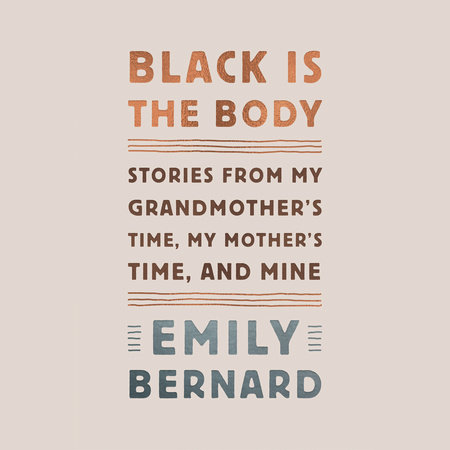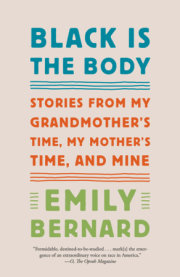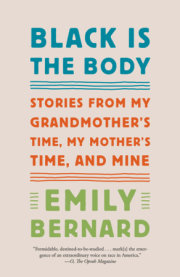Beginnings This book was conceived in a hospital. It was 2001, and I was recovering from surgery on my lower bowel, which had been damaged in a stabbing. A friend, a writer, came to visit me in the hospital and suggested not only that there was a story to be told about the violence I had survived, but also that my body itself was trying to tell me something, which was that it was time to face down the fear that had kept me from telling the story of the stabbing, as well as other stories that I needed to tell.
I began to write essays. The first one I published was “Teaching the N-Word.” Over the next few years, more essays followed, along with several attempts to write about the stabbing. I couldn’t tell that story yet because I didn’t know what it meant. It took seven more years for me to understand that the experience of being at the wrong end of a hunting knife was only the situation, not the story itself; it was the stage, not the drama. In
The Situation and the Story: The Art of Personal Narrative, Vivian Gornick writes: “The situation is the context or circumstance, sometimes the plot; the story is the emotional experience that preoccupies the writer: the insight, the wisdom, the thing one has come to say.”
The setting of “Scar Tissue,” which is the essay I eventually wrote about being stabbed, is my gut; the blood let flow by the knife is the trail I followed until I discovered the story, which is the mystery of storytelling itself, and how hard it is to tell the whole truth. Each essay in this book is anchored in this mystery, in blood. They are also rooted in contradictions, primary among them being that the stabbing unleashed the storyteller in me. In more than one way, that bizarre act of violence set me free.
But, of course, the stabbing has been a source of misery as well as opportunity. For instance, I suffered from recurrent, excruciating stomach pain for many years before another trip to the hospital revealed that I had developed adhesions in my bowel. The surgeon was able to untangle my intestines and scar tissue, but he warned me that the adhesions would return. There was nothing I could do to prevent or predict them. “You’re just unlucky,” he said sympathetically. The pain, he assured me, would be random and severe. It did return, thundered, again, throughout my body, and sent me back to the hospital, where a third surgeon ceded to the inherent mystery of the malady and confessed that medicine was more art than science. The gift of his honesty was, to me, as valuable as any solution to the problem would have been.
Once I accepted the randomness of the situation in my bowel, life took on a new urgency, and so did the desire to understand it. I turned to art over science, story over solution. I found a voice. The book imagined in 2001 began to take shape in a need to know, to explore, to understand, before it was too late. Insofar as the personal essay is, at heart, an attempt to grasp the mysteries of life, the form made sense to me on a visceral level. The need to understand, in fact, was what engendered the stabbing in the first place: I met the knife head on. Something in me just needed to know.
Each essay in this book was born in a struggle to find a language that would capture the totality of my experience, as a woman, a black American, a teacher, writer, mother, wife, and daughter. I wanted to discover a new way of telling; I wanted to tell the truth about life as I have lived it. That desire evolved into this collection, which includes a story about adoption that is as pragmatic as it is romantic; a portrait of interracial marriage that is absent of hand-wringing; and a journey into the word “nigger” that includes as much humor as grief. These stories grew into an entire book meant to contribute something to the American racial drama besides the enduring narrative of black innocence and white guilt. That particular narrative is not false, of course, which accounts for its endurance, but there are other true stories to tell, stories steeped in defiance of popular assumptions about race, whose contours are shaped by unease with conventional discussions about race relations. These other true stories I needed to explore, but I was mainly driven by a need to engage in what Zora Neale Hurston calls “the oldest human longing—self-revelation.” The only way I knew how to do this was by letting the blood flow, and following the trail of my own ambivalence.
I was not stabbed because I was black, but I have always viewed the violence I survived as a metaphor for the violent encounter that has generally characterized American race relations. The man who stabbed me was white. But more meaningful to me than his skin was the look in his eyes, which were vacant of emotion. There was no connection between us, no common sphere, yet we were suddenly and irreparably bound by a knife, an attachment that cost us both: him, his freedom; me, my wholeness. Revisiting that wound has been a way of putting myself back together. The equation of writing and regeneration is fundamental in black American experience. So, if race was not an essential factor in what brought me into contact with a hunting knife, I have certainly treated the wound with the salve that I inherited from people whose experiences of blackness shaped their lives as fully and poetically as it has shaped mine. I am most interested in blackness at its borders, where it meets whiteness, in fear and hope, in anguish and love, just as I am most drawn to the line between self and other, in family, friendship, romance, and other intimate relationships.
Blackness is an art, not a science. It is a paradox: intangible and visceral; a situation and a story. It is the thread that connects these essays, but its significance as an experience emerges sometimes randomly and unpredictably in life as I have lived it. It is inconsistent, continuously in flux, and yet also a constant condition that I carry in and on my body. It is a condition that encompasses beauty, misery, wonder, and opportunity. In its inherent contradictions, utter mysteries, and bottomlessness as a reservoir of narratives, race is the story of my life, and therefore black is the body of this book.
Copyright © 2019 by Emily Bernard. All rights reserved. No part of this excerpt may be reproduced or reprinted without permission in writing from the publisher.












